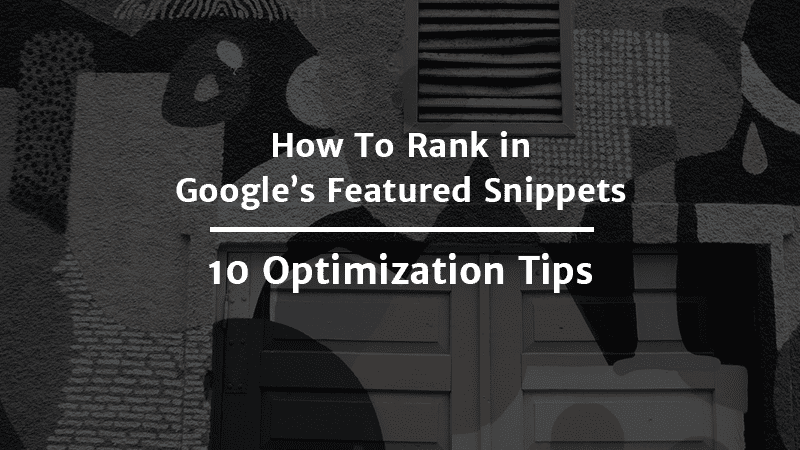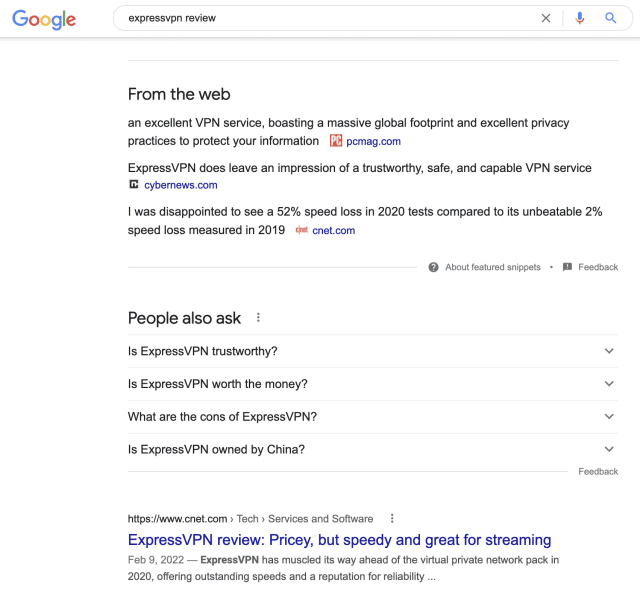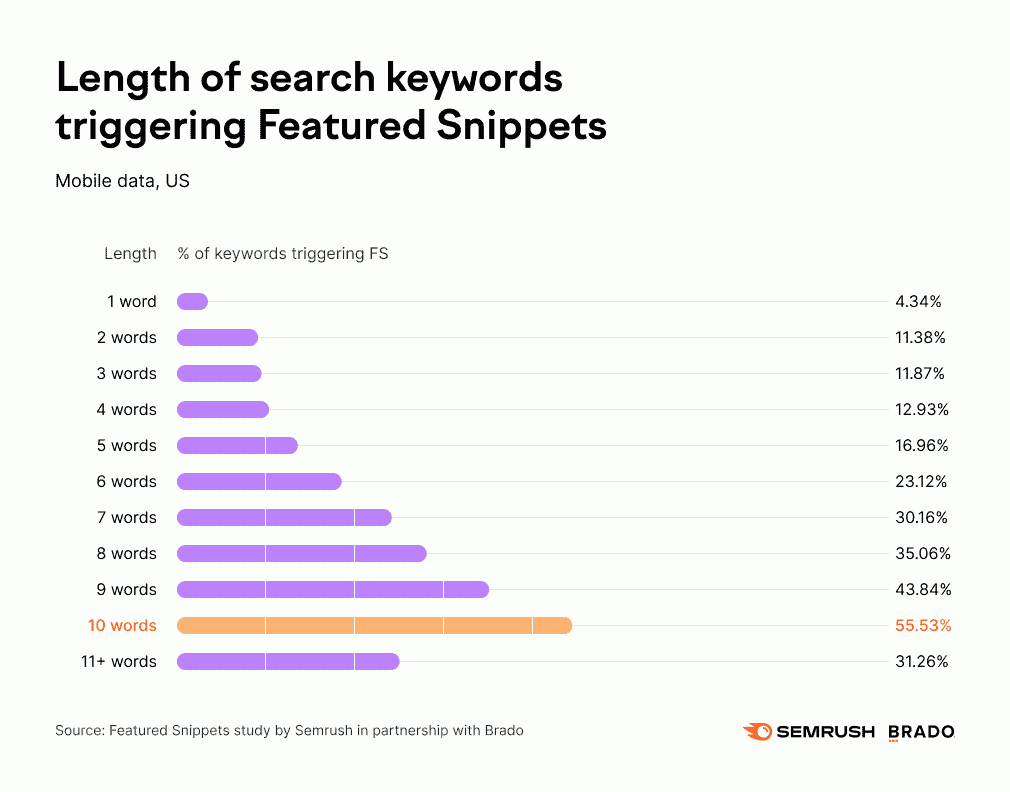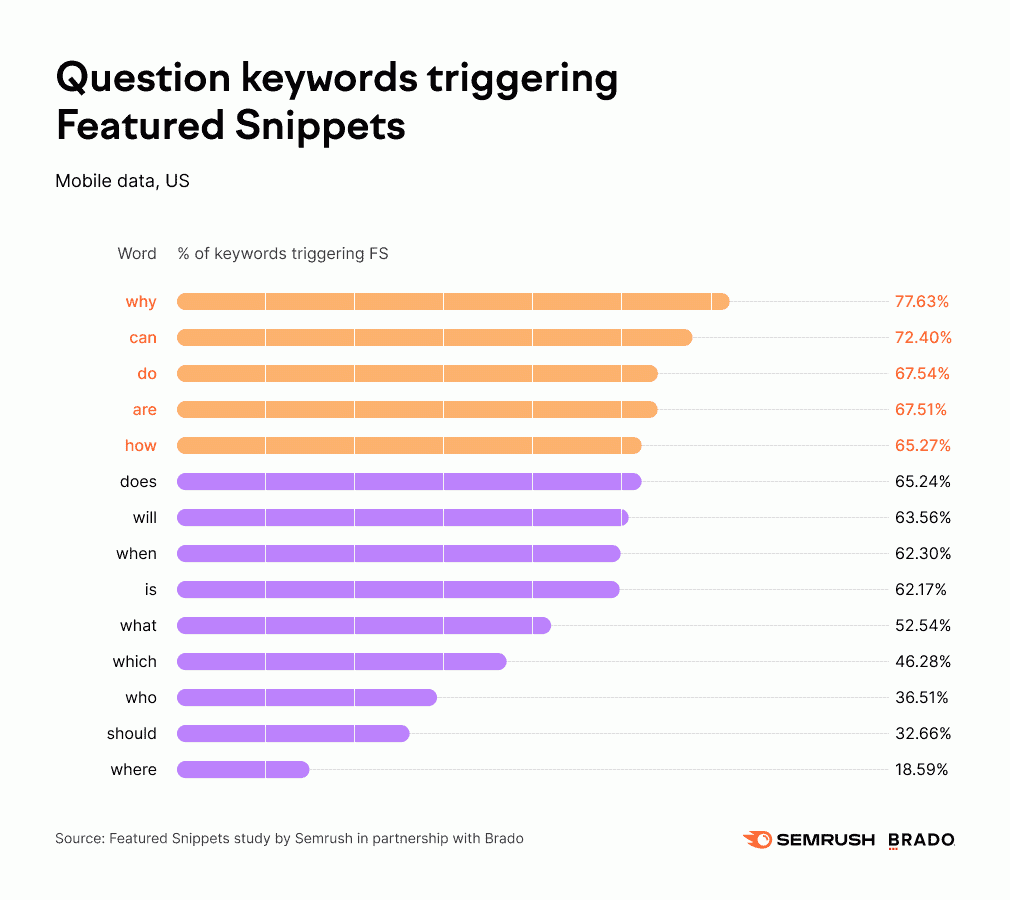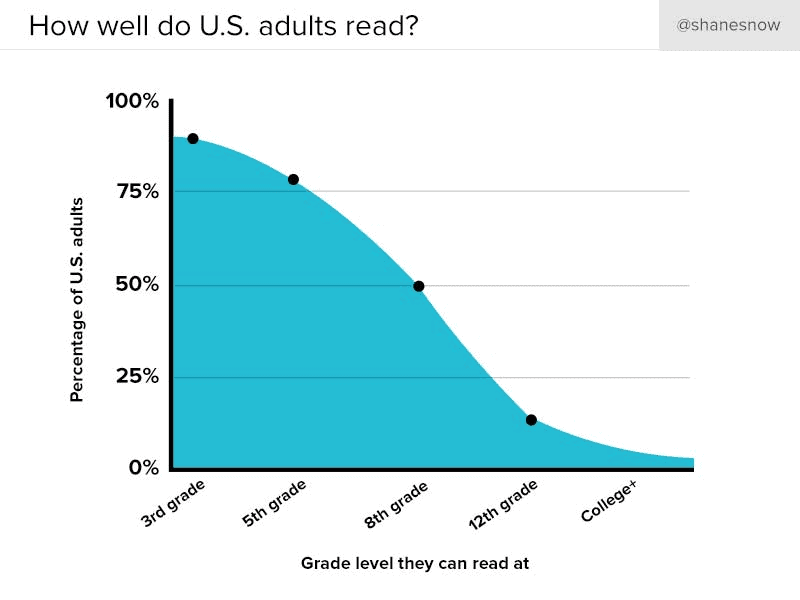Featured snippets balance the seemingly competing goals of Google and businesses wanting to optimize their appearance in relevant searches.
Google wants to give searchers the most useful information in the search engine results pages (SERPs), so it frequently updates its algorithms. Google also answers queries using rich results and knowledge panels — which result in two-thirds of Google searches ending without clicks to other web properties.
Both instances make it difficult for businesses that want to appear at the top of Google search to get the most visibility for their brand.
Google’s solution? Featured snippets.
Featured snippets are excerpts taken from relevant webpages that try to answer a searcher’s query accurately. They appear at the top of organic search results, increasing mobile, voice, and general search engine visibility for your content and offering a higher click-through rate (CTR) compared to regular organic search results.
But featured snippets can be tricky to win. Semrush found that only 19% of keywords trigger them.
So how do you optimize for one?
In this guide, we’ll discuss how to get a featured snippet on Google. Specifically, you’ll learn:
How to Understand Featured Snippets
Featured snippets (or position zero) appear as a box on top of the usual Google search results, sharing information relating to a specific search query.
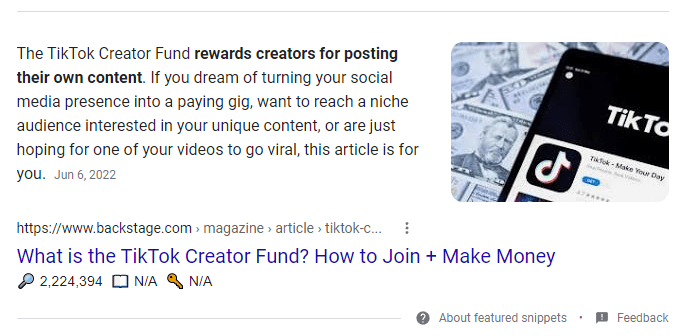
Because Google processes billions of search queries daily, it introduced the featured snippet to quickly answer questions from users. The answers come from content indexed within search engine result pages (SERPs).
Google chooses featured snippets based on how accurately it thinks the content answers the question. It also asks for searcher feedback to offer more accurate results.
Featured Snippets vs. Google Answer Boxes
Featured snippets are similar to Google Answer Boxes (also known as rich answers) because they also appear as boxes in the top position of a SERP.
The difference is that Google Answer Boxes return rich answers instantly without any credit to a website.
For example, the search query “Oscar best actor winners” shows a knowledge panel for 2022 Oscar best actor winner Will Smith. Clicking on the result doesn’t take you to a specific webpage — it simply shows you relevant information about the actor without leaving Google.
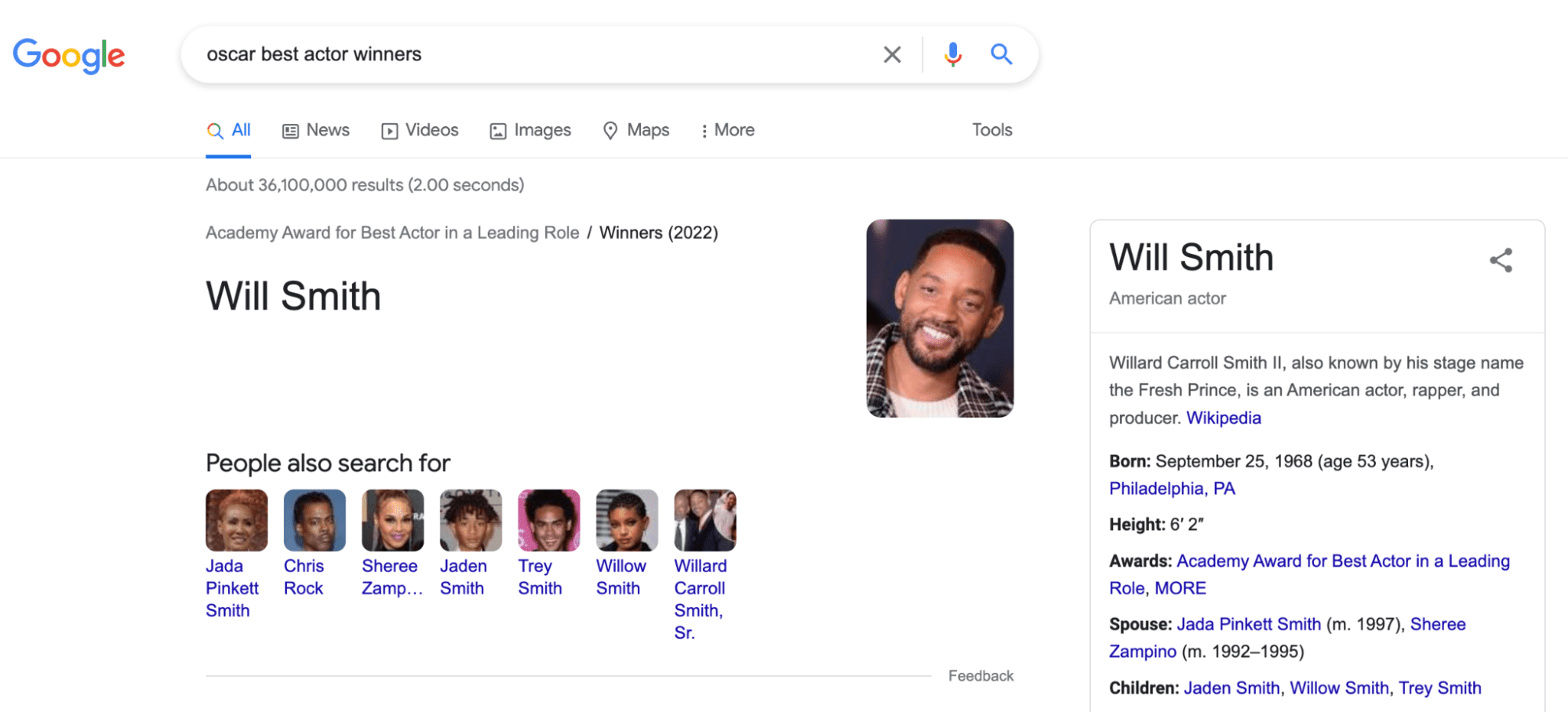
The Importance of Featured Snippets in SEO
Now that you know what a featured snippet is, why should you learn how to get a featured snippet on Google?
Featured snippets impact SEO in many ways. They can:
- Increase CTR: Featured snippets give webpages a chance to get a serious organic traffic According to First Page Sage, the top 1 and 2 results had a clickthrough rate (CTR) of 39.6% and 18.4%, but if they were also featured snippets, the CTRs increased to 43.1% and 27.1%, respectively.
- Increase credibility: If your piece of content appears on the featured snippet, it’s a sign that Google finds your content well-written and valuable to readers. Having your content appear as a featured snippet also offers credibility to your position as a thought leader in your field.
- Improve voice and mobile search: Google introduced featured snippets to enhance the voice and mobile search experience, giving users quick answers while they’re on the go.
For context, Google often returns featured snippets in voice search, while Semrush research says featured snippets take up at least 50% of the screen on mobile so it’s the first thing you see.
Types of Featured Snippets
Google offers four main types of featured snippets: paragraph, list, table, and video.
Here’s a description of each type:
1. Paragraph Snippets
Paragraph snippets are text Google pulls from webpages to give searchers a direct and concise answer for a query. They’re often used to answer “what is” searches.
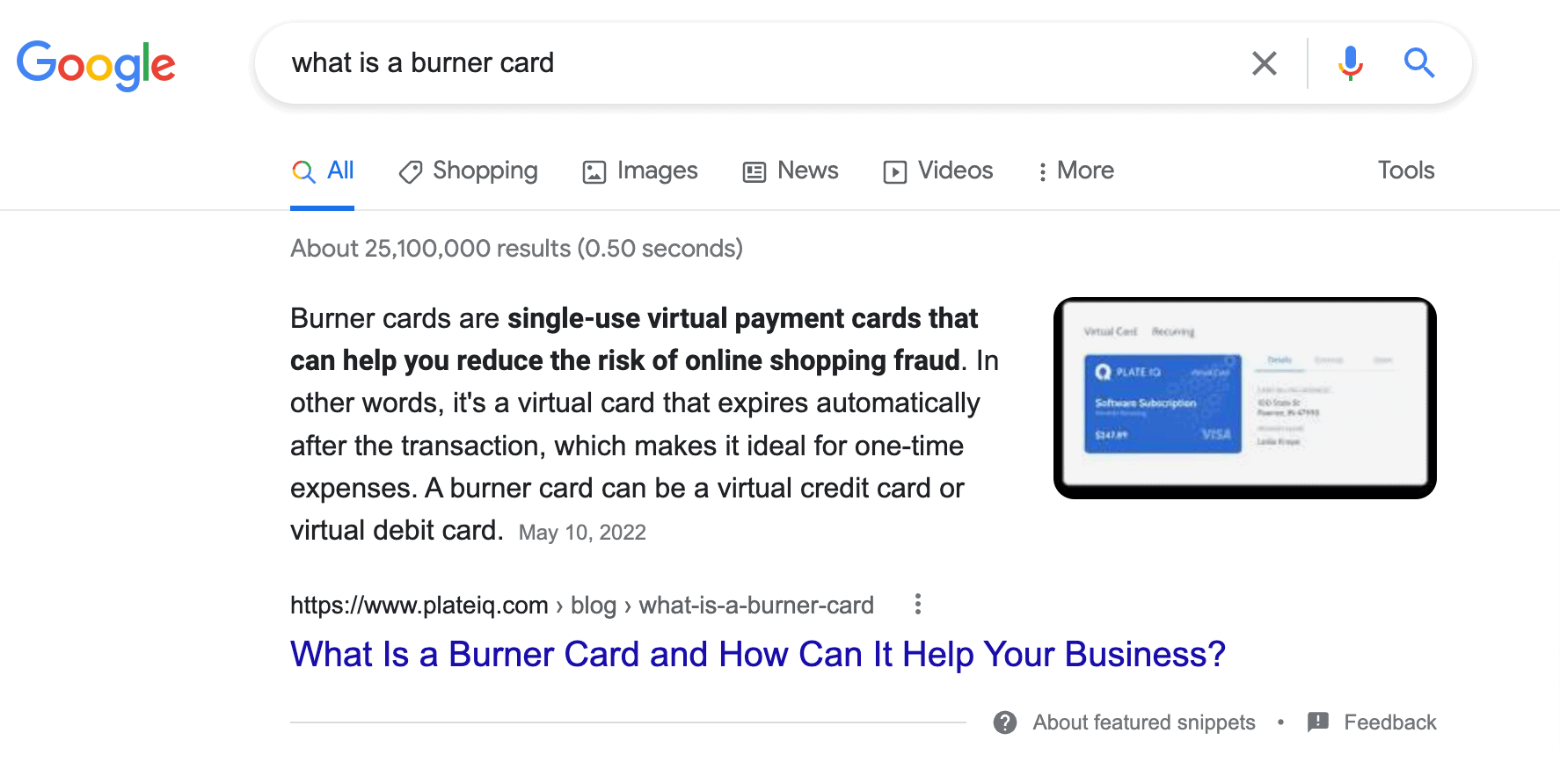
According to Semrush’s research, paragraph snippets are the most popular type, making up 70% of featured snippets. The average paragraph featured snippet is around 42 words long, or approximately 249 characters.
2. List Snippets
List snippets can be numbered (ordered) or bulleted (unordered) lists.
You can use numbered list snippets to rank items or demonstrate step-by-step instructions, such as tutorials or recipes. In contrast, you can use bulleted list snippets to list things that don’t need to be in a specific order.
For example, here’s an unordered list featured snippet box for “website monitoring tools.”
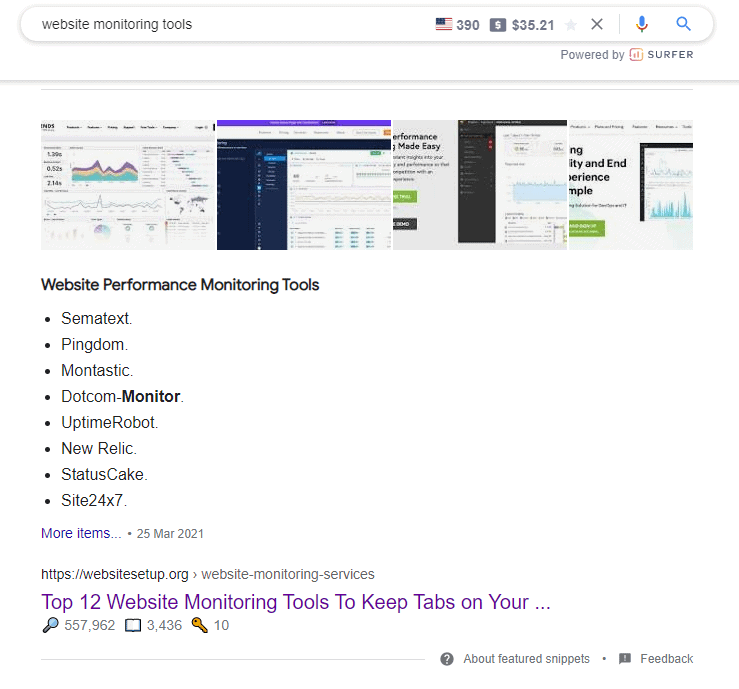
3. Table Snippets
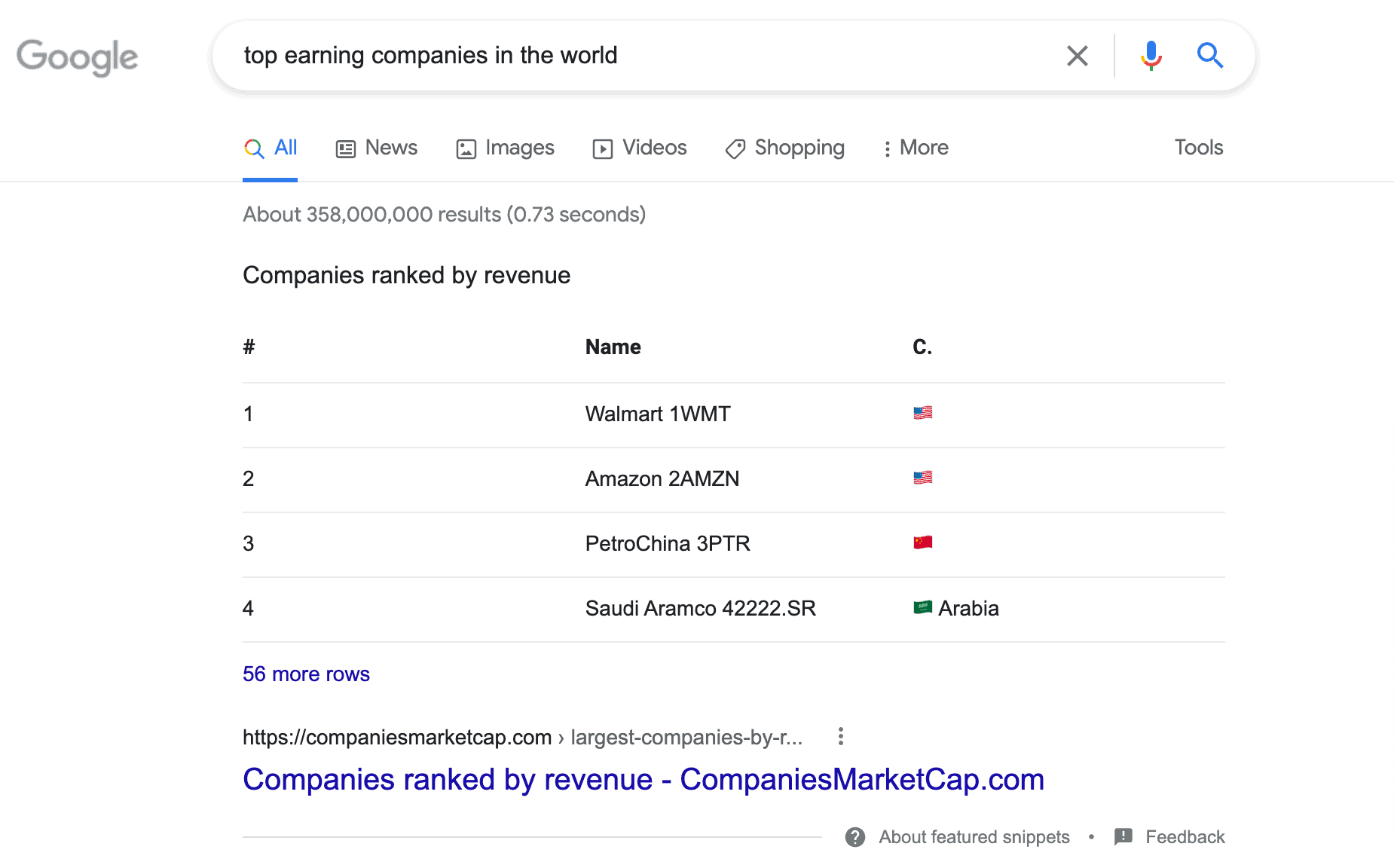
Table snippets let Google display data in an organized way, which helps users visualize data more efficiently.
Table snippets make up 6% of all featured snippets and are often used for comparisons, such as rates or pricing data.
If you want your content ranked for a table snippet, SEJ advises you to aim for at least four rows of data, while Semrush says tables with two columns and five rows of data perform best.
4. Video Snippets
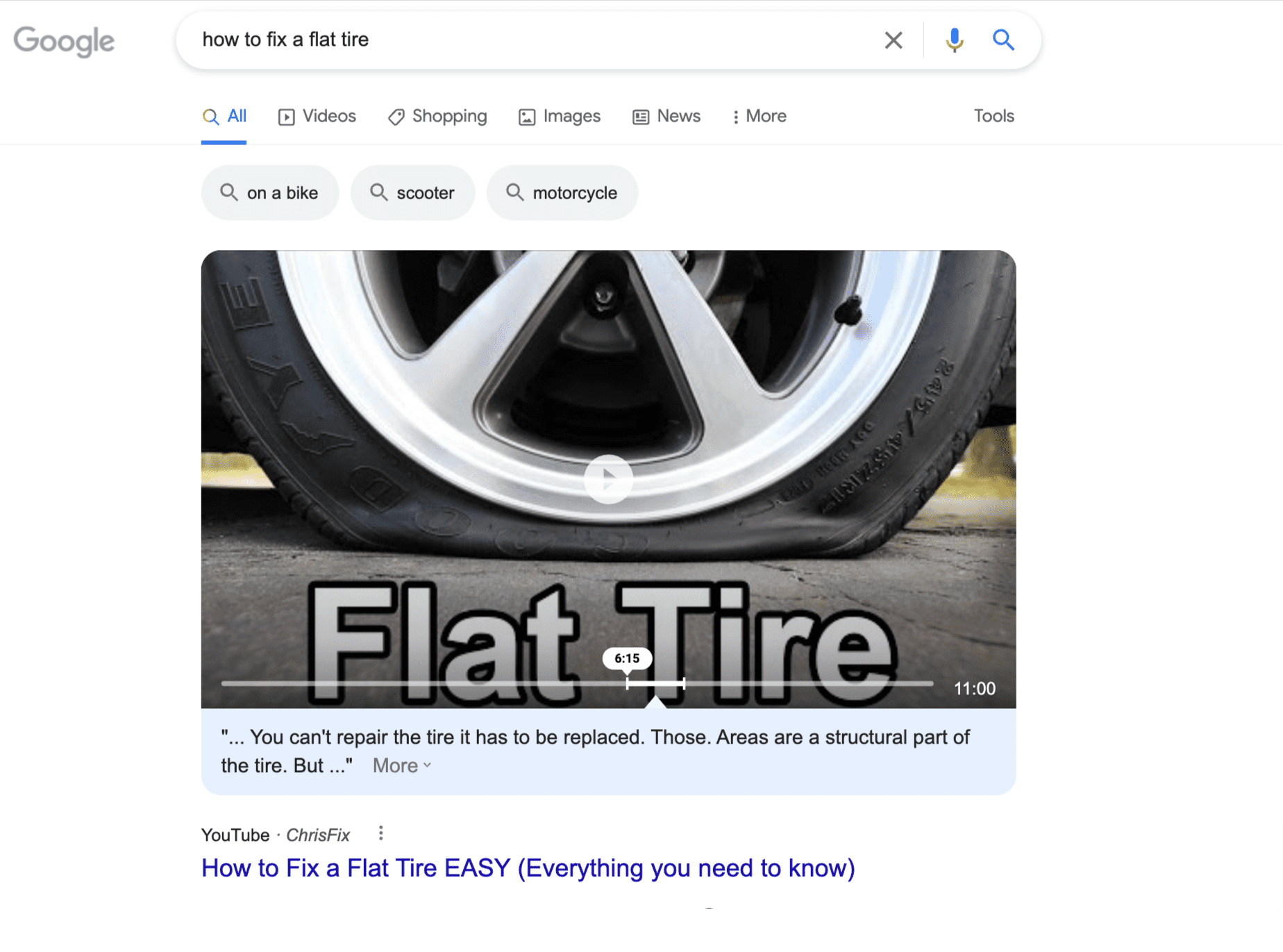
Featured snippets aren’t limited to written web content — Google also returns video snippets 4.6% of the time.
Consider ranking for video featured snippets if your audience consumes video content heavily.
Google shows video snippets if it thinks a video would answer a query better than a summary of blog content. With YouTube as one of the largest search engines, it’s no surprise the platform’s videos tend to dominate video snippets.
If you want to rank for video snippets, Semrush found that the ideal video length is usually six minutes and 35 seconds long.
New Featured Snippets in Beta Testing
Google is also testing new types of featured snippets — From the web and Other sites say.
Unlike the usual featured snippets, which only consider one source, these new featured snippets will come from multiple online sources.
Here’s a sample:
Now, let’s go over how to get a featured snippet by learning how to optimize for them:
Featured Snippet Optimization
- Observe the SERPs
- Optimize for long-tail keywords
- Publish Q&A content
- Determine what’s currently ranking
- Use proper formatting
- Write concise and readable sentences
- Optimize for voice search
- Use structured data
- Put dates on your content
- Additional best practices
1. Start with the SERPs
The first step in learning how to get a featured snippet on Google is to leverage the search results page to uncover snippet opportunities.
Start by looking at what comes up in the SERP for that term and determine how you can create a better, more helpful content summary.
We don’t recommend attempting to optimize for a different snippet type than the one showing up on the relevant search. That’s because Google will likely choose one that follows the current ranking type.
For example, don’t try to optimize for a paragraph snippet when the current ranking one is a list. Instead, focus on making your content better than the current snippet.
2. Optimize for Long-Tail Keywords
Less is more — except when optimizing for featured snippets.
Everyone wants a competitive keyword ranking, but there are several advantages to targetting long-tail or low-difficulty keywords.
First, ranking for them in the SERPs and as a featured snippet is much easier.
According to the Semrush study, 55.5% of keywords composed of 10 words had a featured snippet.
High competition keywords make winning the featured snippet spot harder, especially when your website has not yet established authority.
Second, long-tail keywords reveal search intent.
Searchers looking for information often have different queries from those looking to buy, and their search queries reflect that.
When you understand what your readers are looking for, you’re more equipped to provide them with the content they need — whether it’s a short or specific answer, comparison, or video.
There are many ways to find low-difficulty keywords, but a thorough keyword research process gives you an advantage.
3. Publish Q&A Content
Google created featured snippets to answer users’ questions quickly, so one of the easiest ways to score them is to publish Q&A content.
According to the Semrush study, 29% of keywords that triggered a featured snippet are question-based. Common question-based words, such as “how,” “why,” “do,” and “can,” reflect informational intent, which snippets aim to answer.
If you don’t know how to start or where to look for questions, these are great places to start:
- Quora
- AnswerThePublic
- AlsoAsked
- Google’s People also ask section
Once you have questions related to your main keyword, try structuring your content for featured snippets.
You don’t want to just answer random questions. Google uses relevancy to rank pages, so make sure the questions revolve around the same topic.
4. Consider What’s Currently Ranking
Another helpful piece of advice for how to get a featured snippet on Google is to analyze your website and consider the keywords you’re currently ranking for.
Use Google Search Console and SEO tools like Semrush and Ahrefs to find keywords that trigger featured snippets. You can also look at your competitors’ websites using competitor analysis tools as an efficient source of ideas.
Here’s a basic process, using Ahrefs:
- Go to Site Explorer and enter the competitor URL.
- Look at Organic Keywords.
- Filter by SERP Features and choose Featured Snippet.
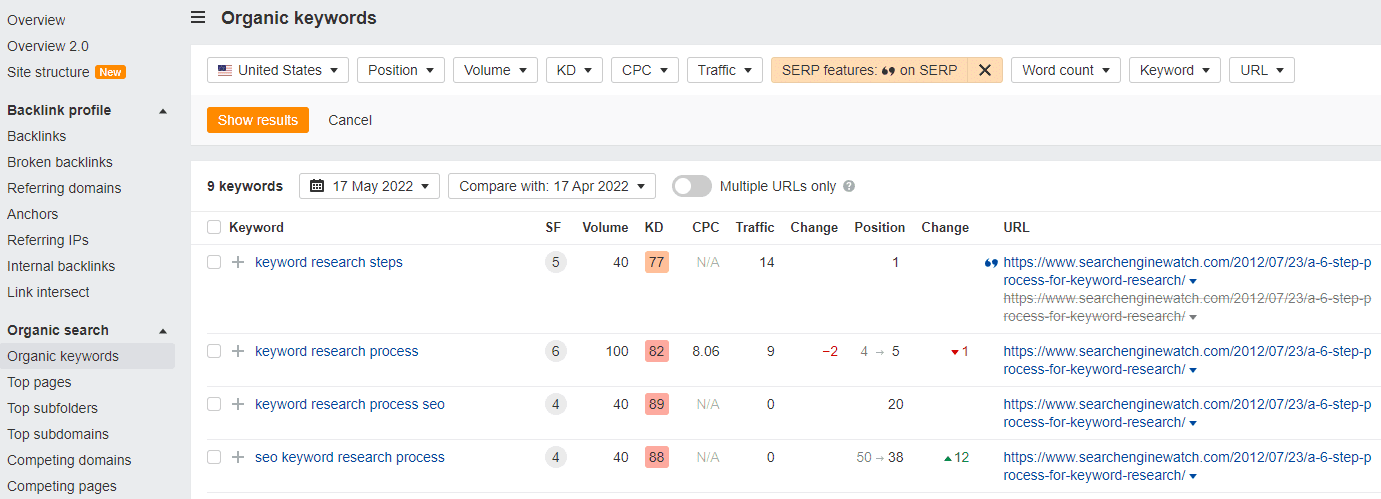
5. Use Proper Formatting
Another way to get featured snippets — especially paragraph and list snippets — is to format your content properly.
Generally speaking, this means breaking up each section using subheadings so readers and search engines can easily find what they’re looking for. In addition, consider the current featured snippet to beat and optimize your content accordingly.
List snippets should be formatted as H2 (Heading 2) tags and incorporate ordered (numbered) or unordered (bullet) list formatting. You may need to use H3 (Heading 3) tags when it makes more sense to place the snippet within an H2.
Add list snippet items underneath the list as lower-level headings. For example, if the list snippet is H2, ordered or unordered list items should be formatted as H3s.
The photo below shows the content of the list snippet example we shared above. Notice the list snippet keyword H2 and list items as H3s.
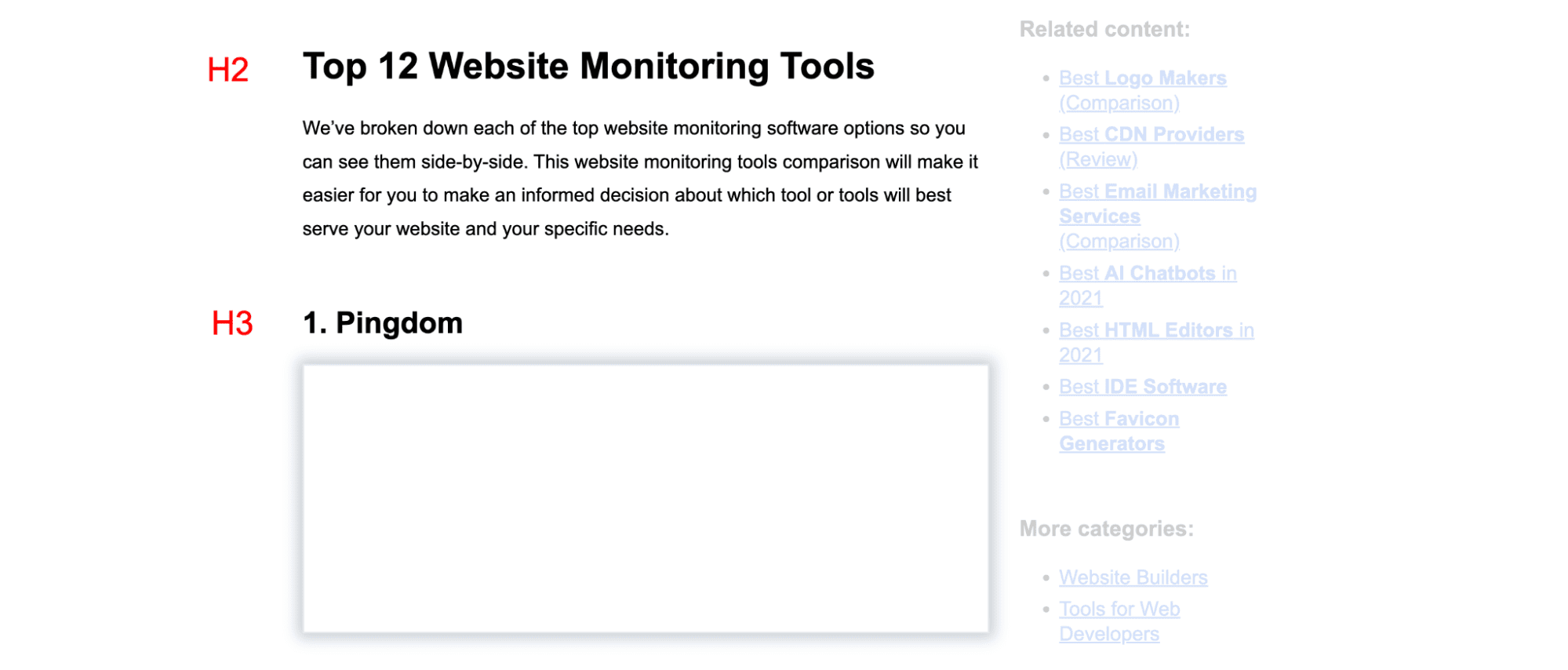
6. Write Concise and Readable Sentences
The Semrush study found that content that contains a minimum of 1,100 words often ranks for featured snippets.
Besides following the correct content format, keep these good writing practices in mind when optimizing for snippets:
- Detailed but concise: Make sure your content does an excellent job of thoroughly answering the query posed by the featured snippet
Use the inverted pyramid method, where you include a definition of terms or give a direct answer to the question posed by the keyword. Start specific, then go more general. Aim for roughly 300 characters or less or follow the 2–3 sentences rule.
The same goes for table snippets. Optimizing for them is about being concise — you want the reader to understand the information you’re trying to convey at a glance. Keep titles and phrases for table and row columns short.
- Objective: When writing definition-type paragraph snippets, write objectively. It should read like a dictionary entry and shouldn’t include personal opinions.
- Readable: It may not seem like it, but readability plays a significant role in content marketing and SEO. You may create the most informative article online, but it’s no use if your target audience can’t understand it.
Reading levels vary from website to website depending on your target audience, but an 8th-grade reading level or lower is good to aim for. After all, half of the U.S. population reads below an 8th-grade level.
Different readability tests are available, but the Flesch-Kincaid reading ease score is the most popular. It calculates the readability score based on two variables:
- The average length of sentences (relative to the number of words)
- The average number of syllables per word
The test rates a text’s readability from 0 to 100, with high scores meaning the text is easy to read. Aim for a score of 60–70, which indicates the text can be understood by 13 to 15-year-olds. Yoast and Grammarly use the Flesch-Kincaid test to measure readability.
You can also use the Hemingway app to simplify your copy.
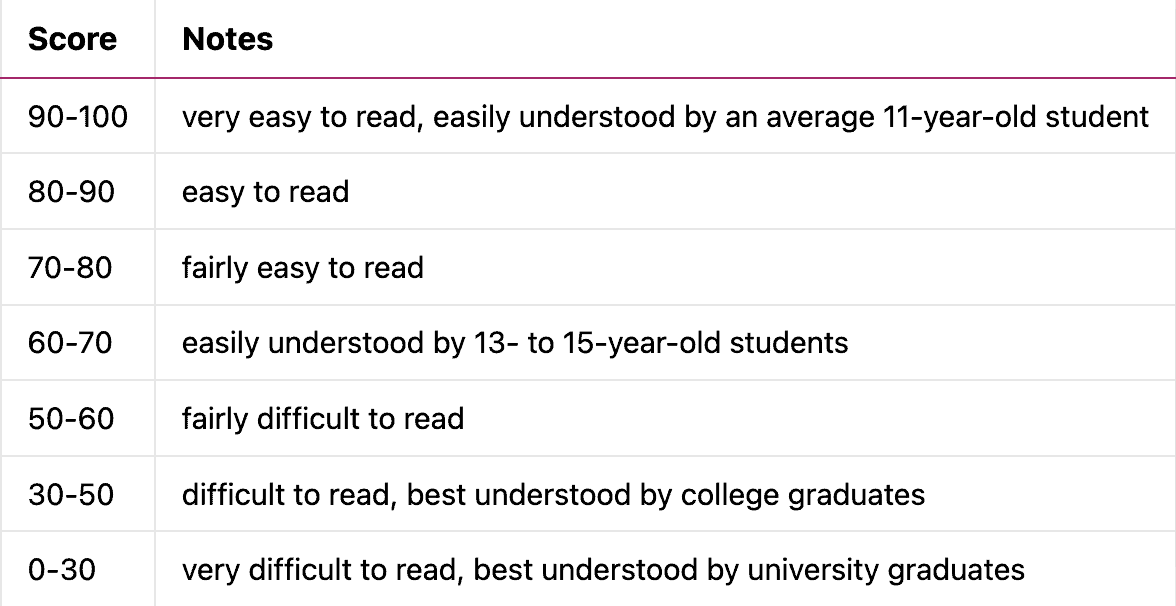
To learn more about formatting and style guidelines, check out Maddy’s book, Writing for Humans and Robots: The New Rules of Content Style.
7. Optimize for Voice Search
Google created featured snippets to improve mobile and voice search. Semrush’s research has found that featured snippets take up at least 50% of the screen on mobile, which could pose a competitive advantage by removing other search results off the screen entirely.
Optimizing for voice search is similar to optimizing for regular search — with the added task of optimizing for local search as it is prevalent on mobile devices.
8. Use Structured Data
Structured data — specifically, schema markup — helps search engines understand your content better, improving its visibility and click-through rates.
While implementing structured data doesn’t guarantee featured snippets, it does improve search engine crawlability and provide more detailed search results.
Semrush shares that two-thirds of articles use structured data, but certain types of articles benefit more: like FAQs, Q&A, and how-to pages.
9. Put Dates on Your Content
According to Semrush, 70% of dated featured snippets were from pages two to four years old (2018-2020), with only 1% of featured snippets being a week or a few hours old.
There’s a strong case for adding dates to your content. Doing so can:
- Reduce confusion: Readers don't want to click on a website and find outdated information.
- Build trust by showing Google and visitors alike that your website is active and you're committed to updating it.
- Help users who want to reference fresh resources for research.
10. Additional Featured Snippet Best Practices
Most of the tips we’ve shared for featured snippet optimization relate to content creation best practices, but don’t neglect these on-page SEO practices:
- Use HTTPS: It is an indication to search engines that your website is safe for searchers. If you don’t already have one, install an SSL certificate — Semrush notes that 98% of featured snippets use HTTPS.
- Don’t complicate your URL structure: Using complex URLs may cause problems for crawlers. According to Semrush’s research, long URLs are less likely to get a featured snippet. Limit your URLs to 1–3 subfolders.
- Optimize images for the right size: The images Google inserts into featured snippets aren’t always taken from your content. Google uses their images algorithm to do that. But you can increase the chances of your images being included by optimizing them for the ideal size.
Semrush says Google scales down the average graphic in a featured snippet to 159 pixels tall and 197 pixels wide (or about 160 x 200px). You can use a larger image with the same ratio, such as 960 x 1200px.
The Blogsmith Style Guide suggests adding an image for every 300 words. When uploading images, don’t forget to use a descriptive file name and add alt text, so search engines understand the image context.
Challenges in Obtaining Featured Snippets
Obtaining a featured snippet seems pretty straightforward when you follow best content practices, but you may face some challenges, such as:
- Snippets differ from location to location: Depending on the search location, for specific queries, Google will rank different types of snippets. They may either involve different snippet types (as shown in the example below), or the same type but from different websites.
This may pose a challenge if you’re aiming to rank for the snippet in different countries.
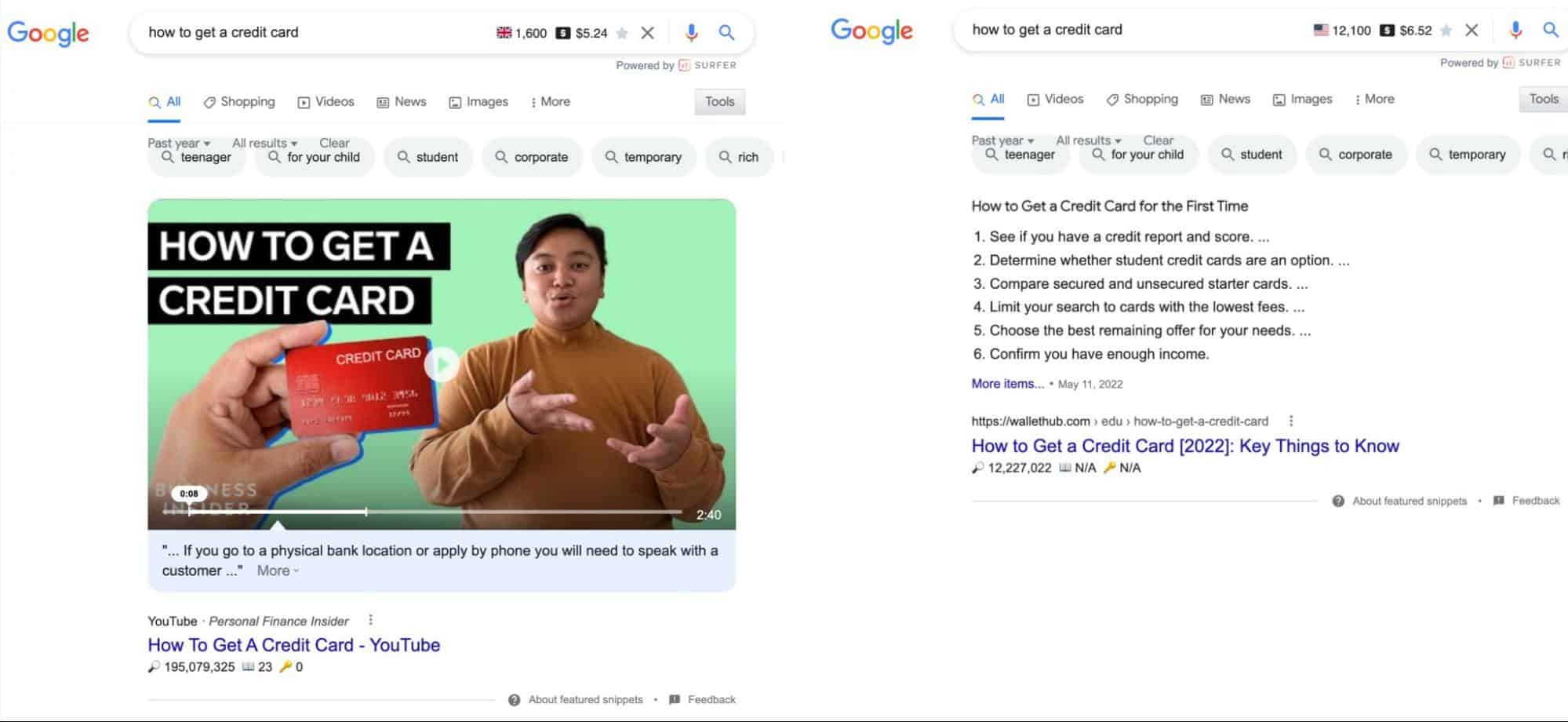
- Most featured snippets often come from results found on the first page of Google, with greater chances if you rank in the top five.
- Your website isn’t considered authoritative and trustworthy: Google may also rely on these factors to determine whether your content deserves the top position. Multiple backlinks may imply quality and trustworthiness because more people trust your page to link to it.
Additionally, a lack of a specific niche might be an indication of less topical authority. When you publish various unrelated subjects, search engines will be confused about your website’s topical authority.
- Outdated content: As noted earlier, Semrush found that 70% of featured snippets are between two to four years old, which is perfectly fine as long as you constantly update your content. The problem is when you don’t — searchers will get obsolete results, which isn’t helpful.
Final Thoughts: How To Get a Featured Snippet on Google — 10 Best Tips
Featured snippets impact organic rankings, improve site visibility, and help searchers find answers more quickly. They also boost conversions.
Wondering how to get a featured snippet on Google? Write informative content that answers users’ queries and follow the SEO best practices to improve your chances of winning and keeping a featured snippet.
Keyword research also plays a big part of getting a featured snippet. Competitive keywords are difficult to rank for, while complicated keywords hardly get any search volume.
If you need help, The Blogsmith’s advanced keyword research process includes everything from topic analysis, competitor analysis, to gathering featured snippet opportunities and content optimization.
Contact us for a consultation today.

